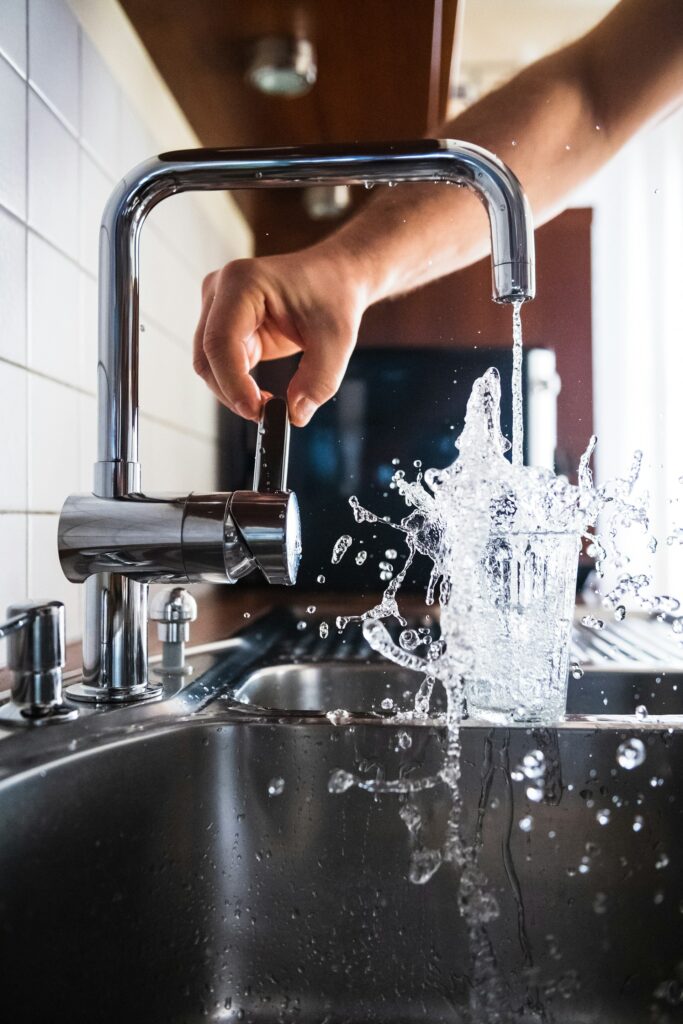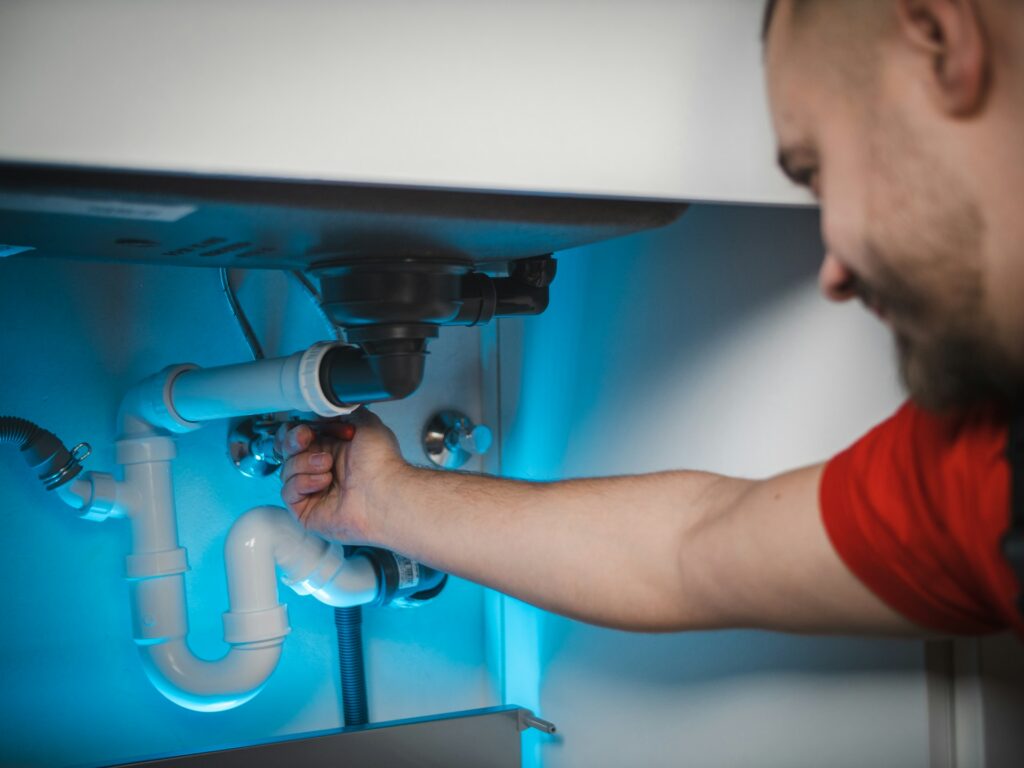Introducing the essential guide to common kitchen sink problems:
- Delve into the everyday challenges homeowners face with their kitchen sinks.
- Emphasize the significance of equipping oneself with the skills to address these issues promptly and effectively.
- Get ready to explore practical solutions and expert advice in this comprehensive guide.
Unlock the secrets to maintaining a smoothly functioning kitchen sink!

1. Identifying Common Kitchen Sink Problems
Identifying common kitchen sink problems is the first step towards maintaining a functional and efficient sink. Leaky faucets are a frequent annoyance, characterized by dripping or continuous water flow. Causes can range from worn-out washers to damaged O-rings, but solutions typically involve replacing these components or tightening connections.
Clogged drains are another prevalent issue in kitchen sinks, often signaled by slow drainage or standing water. Various factors contribute to clogs, including food debris, grease buildup, and foreign objects. Remedies may involve using a plunger or plumber’s snake to dislodge the blockage, or utilizing chemical drain cleaners for stubborn clogs.
Low water pressure can hinder the performance of your kitchen sink, resulting in inadequate water flow for washing dishes or filling pots. Indicators of low water pressure include weak streams of water and difficulty rinsing soap off dishes. Factors such as mineral buildup, pipe corrosion, or water supply issues can contribute to this problem, with fixes ranging from cleaning faucet aerators to repairing or replacing plumbing components.
2. DIY Solutions for Kitchen Sink Issues
When it comes to DIY solutions for kitchen sink issues, fixing a leaky faucet is a common task that many homeowners can tackle themselves. With step-by-step instructions readily available online, along with the necessary tools like wrenches and replacement parts, repairing a leaky faucet can be relatively straightforward. By following the proper procedure and using the right tools, you can restore your faucet to its leak-free glory in no time.
Unclogging a drain is another kitchen sink issue that often requires a DIY approach. Techniques for removing debris and blockages vary depending on the severity of the clog and the type of drain. From using a plunger or plumber’s snake to employing homemade drain cleaners made from vinegar and baking soda, there are several methods you can try to clear a clogged drain without calling in a professional plumber.
Increasing water pressure in your kitchen sink may seem like a daunting task, but with the right tips and troubleshooting techniques, you can often resolve this issue on your own. Start by checking for any obstructions in the faucet aerator or water supply lines, and clean or replace them as needed. Adjusting the pressure regulator valve or inspecting the water shut-off valve can also help improve water pressure, ensuring a steady flow for all your kitchen needs.
3. Advanced Techniques for Tackling Tougher Problems
When facing tougher kitchen sink problems, such as a damaged garbage disposal, safety precautions are paramount. Before attempting any repairs, ensure the disposal is powered off and disconnected to avoid accidents. Repair methods often involve troubleshooting issues like jammed blades or motor malfunctions, and may require specialized tools like an Allen wrench or disposal wrench.
A cracked or damaged sink can be a more challenging issue to address, requiring careful assessment and consideration of repair options. Depending on the severity of the damage, repairs may involve sealing small cracks with epoxy resin or silicone caulk, or replacing damaged sections of the sink altogether. Professional assistance may be necessary for extensive damage or structural issues.
Persistent odors emanating from the kitchen sink can be both unpleasant and stubborn to eliminate. Causes of these odors may include food debris trapped in the garbage disposal or drain, bacterial growth, or mold and mildew buildup. Remedies range from regular cleaning and disinfecting of the sink and disposal to utilizing natural deodorizers like baking soda and vinegar or commercial products specifically designed to neutralize odors.
4. Maintenance Tips to Prevent Future Issues
To prevent future issues with your kitchen sink, implementing regular cleaning and maintenance routines is essential. This includes wiping down the sink after each use to prevent buildup of food debris and soap scum, as well as periodically flushing the drain with hot water to clear out any potential clogs. Additionally, performing deep cleanings of the sink and drain on a weekly or monthly basis can help prevent the accumulation of bacteria and mold, keeping your kitchen sink fresh and hygienic.
In addition to regular cleaning, there are several tips you can follow to prevent clogs and leaks in your kitchen sink. Avoid pouring grease, oil, and food scraps down the drain, as these can solidify and cause blockages over time. Use drain guards or screens to catch food particles and debris before they enter the drain, and be mindful of what you put in your garbage disposal to prevent overloading and jamming. Inspecting the sink and faucet for any signs of leaks, such as dripping water or water stains, can help identify and address potential issues before they escalate.
While many kitchen sink issues can be resolved with DIY solutions, there are times when it’s best to call in a professional plumber for assistance. If you encounter persistent or recurring problems despite your best efforts, or if you’re unsure about the severity of an issue, it’s wise to seek professional advice. Plumbers have the expertise and specialized tools to diagnose and repair complex plumbing issues, ensuring that your kitchen sink remains in optimal condition and free from future problems.
5. Troubleshooting Additional Kitchen Sink Concerns
When troubleshooting additional kitchen sink concerns, addressing issues with sprayers and soap dispensers is a common task. Problems may include clogs in the sprayer hose or malfunctioning soap dispenser pumps. By checking for blockages, replacing worn-out parts, and ensuring proper installation, you can restore functionality to these essential kitchen sink accessories.
Fixing problems with sink stoppers and strainers is another aspect of kitchen sink maintenance. Issues such as stuck or broken stoppers, as well as loose or damaged strainers, can impede drainage and cause frustration. Simple fixes may involve cleaning the stopper mechanism or tightening the strainer assembly, while more severe issues may require replacement parts or professional assistance to ensure proper function.
Dealing with issues with water temperature and quality can affect the ease of use and comfort of the kitchen sink. Problems such as fluctuating water temperatures, unpleasant odors, or strange tastes may indicate problems with the water heater, supply lines, or water purification system. Troubleshooting these concerns may include adjusting water heater settings, checking plumbing connections, or replacing filters to improve water quality and consistency.
In conclusion
mastering the art of fixing common kitchen sink problems empowers homeowners to maintain a smoothly functioning kitchen and avoid costly repairs. By following the tips and techniques provided in this comprehensive guide, readers can tackle issues with confidence and efficiency, ensuring their kitchen sink remains a reliable asset in their home. With the knowledge gained from this guide, I have full confidence in readers’ ability to address kitchen sink woes like seasoned professionals, transforming their kitchen experience into a seamless and enjoyable endeavor.


What a fantastic resource! The articles are meticulously crafted, offering a perfect balance of depth and accessibility. I always walk away having gained new understanding. My sincere appreciation to the team behind this outstanding website.